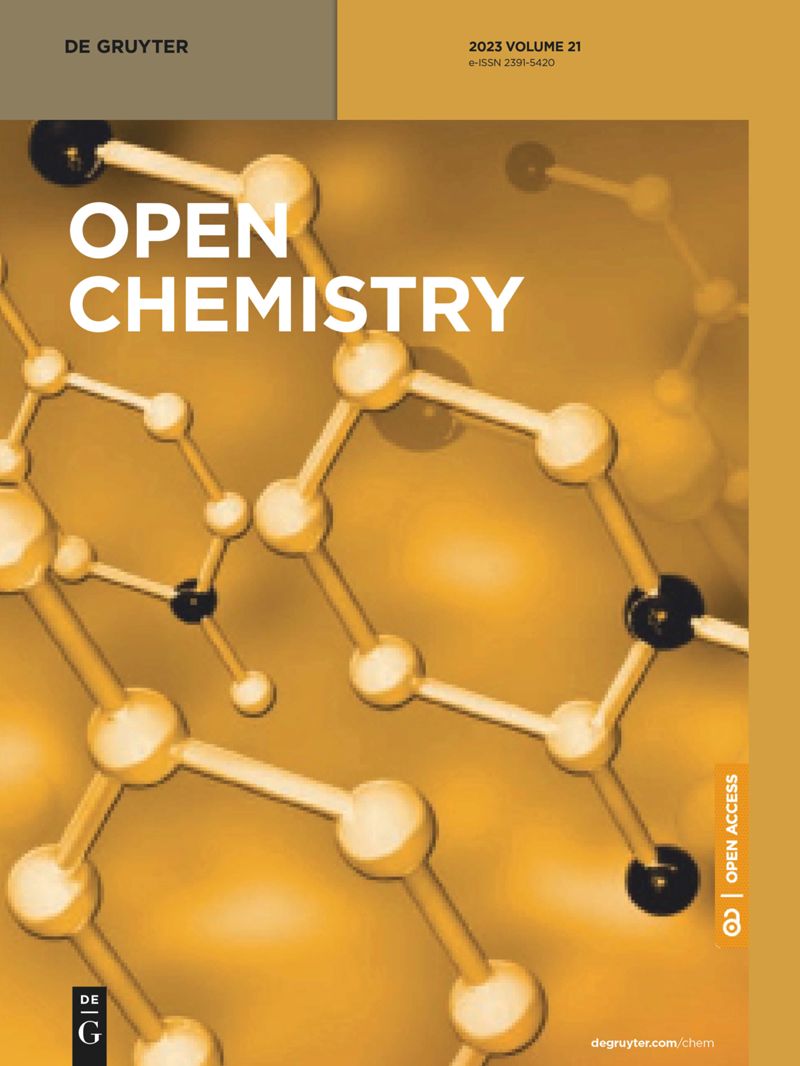Ultrasound induced biosynthesis of silver nanoparticles embedded into chitosan polymers: Investigation of its anti-cutaneous squamous cell carcinoma effects
IF 1.9
4区 化学
Q3 CHEMISTRY, MULTIDISCIPLINARY
引用次数: 0
Abstract
Here we have shown the novel biosynthesis of silver nanoparticles (Ag NPs) encapsulated by chitosan polymers in the presence of超声诱导嵌入壳聚糖聚合物的银纳米粒子的生物合成:研究其抗皮肤鳞状细胞癌的效果
在这里,我们展示了在蓍草水提取物(Ag NPs@CHI)存在下,壳聚糖聚合物封装银纳米粒子(Ag NPs)的新型生物合成方法。首先将银离子嵌入富含胺(NH2)和羟基等极性有机官能团的壳聚糖表面,然后利用植物提取物中富含电子的植物化学物质对银离子进行绿色计量还原。合成完成后,我们利用紫外-可见光谱、透射电子显微镜、FE-SEM、EDS 元素图谱和 ICP-AES 等多种技术研究了纳米复合生物材料的理化特性。接着,我们从生物学角度探讨了该材料对相应细胞系(如 PM1、MET1、MET 4、SCC T9、SCC IC1MET、SCC IC19、SCC T8 和 SCC T11)的抗皮肤鳞状细胞癌作用。纳米复合材料对它们的相关 IC50 值分别为 182、158、177、178、177、99、62 和 183 µg/mL。以癌细胞存活率百分比表示的细胞毒性随着纳米复合材料剂量的增加而降低。
本文章由计算机程序翻译,如有差异,请以英文原文为准。
求助全文
约1分钟内获得全文
求助全文
来源期刊

Open Chemistry
CHEMISTRY, MULTIDISCIPLINARY-
CiteScore
3.80
自引率
4.30%
发文量
90
审稿时长
6 weeks
期刊介绍:
Open Chemistry is a peer-reviewed, open access journal that publishes original research, reviews and short communications in the fields of chemistry in an ongoing way. The central goal is to provide a hub for researchers working across all subjects to present their discoveries, and to be a forum for the discussion of the important issues in the field. The journal is the premier source for cutting edge research in fundamental chemistry and it provides high quality peer review services for its authors across the world. Moreover, it allows for libraries everywhere to avoid subscribing to multiple local publications, and to receive instead all the necessary chemistry research from a single source available to the entire scientific community.
 求助内容:
求助内容: 应助结果提醒方式:
应助结果提醒方式:


